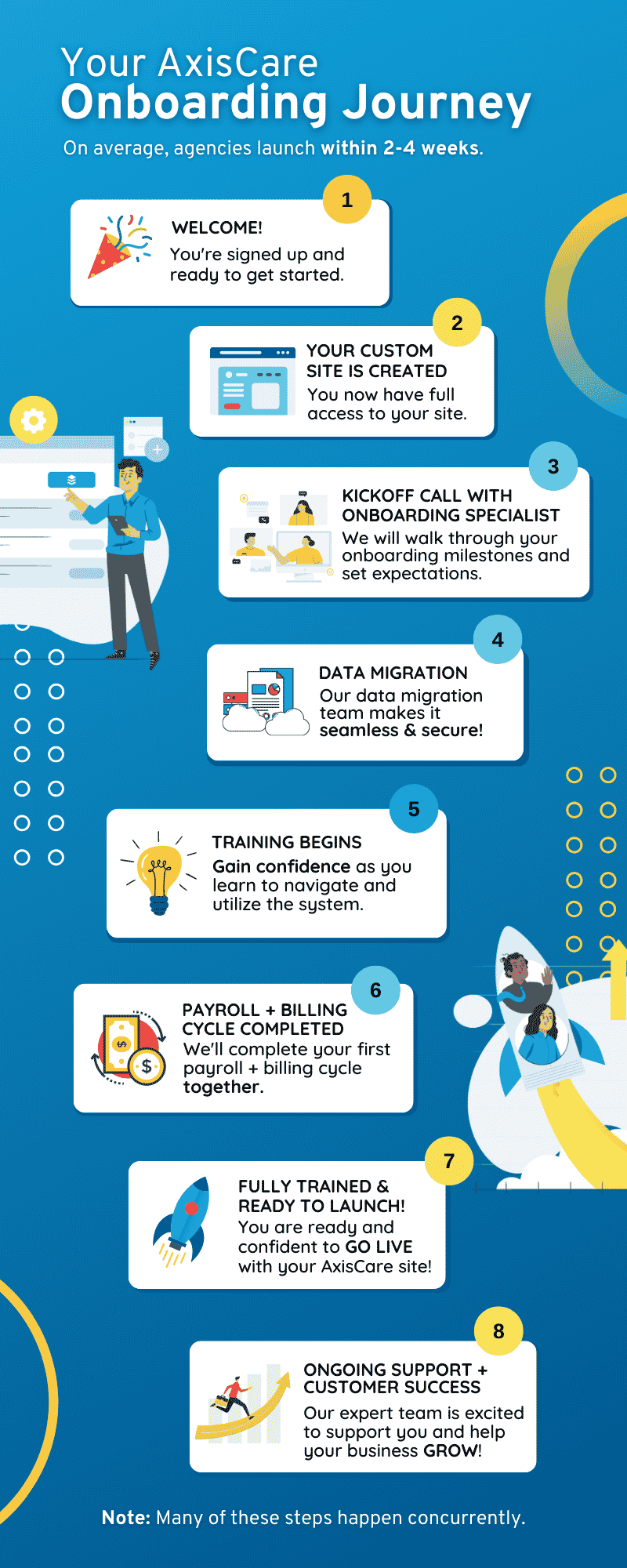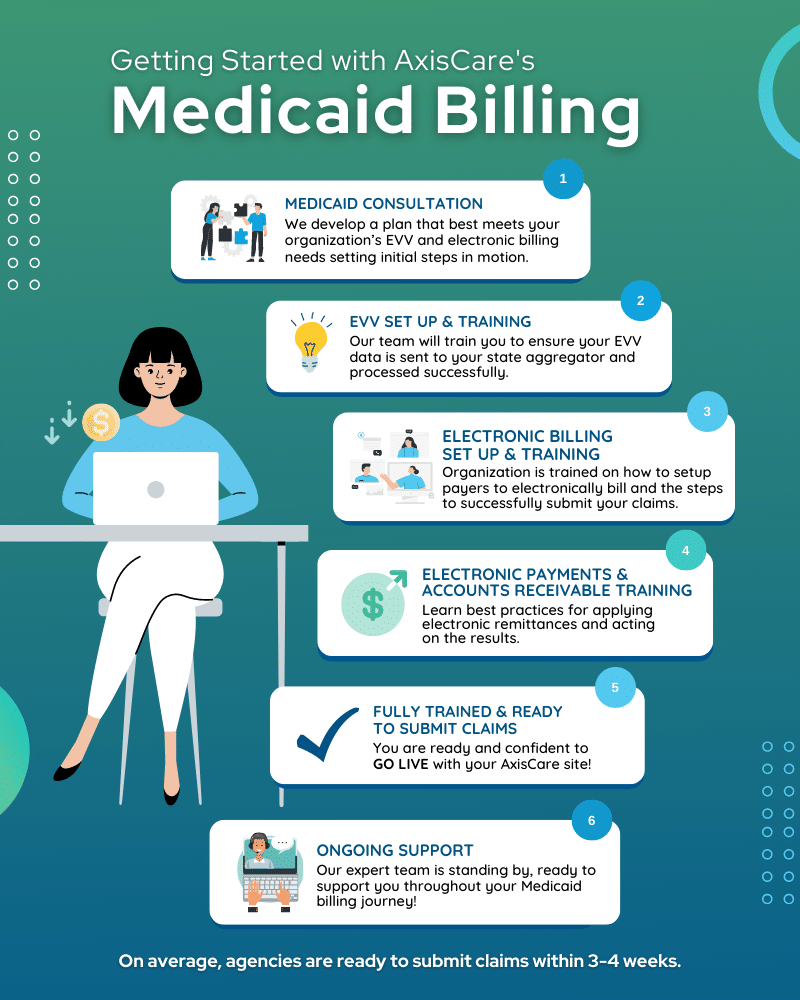Tip Sheet: Top Features to Look for in IDD Software
Agencies serving individuals with intellectual and developmental disabilities (IDD) are balancing various responsibilities, from scheduling visits and managing multiple billing protocols to creating customized person-centered plans and addressing ongoing staff challenges. With so much to coordinate, having the right technology in place is essential.
While many IDD software platforms exist in today’s market, not all are created equal. Knowing what to look for when choosing a software will prevent you from saddling yourself with too many bells and whistles or finding yourself stranded without the features you need. This quick breakdown will familiarize you with all the tools required to run a successful IDD agency that’s streamlined, compliant, and designed to deliver quality outcomes.
Automated Billing and Medicaid-Ready Features
IDD billing is a labyrinth of rules, regulations, and compliance standards. Agencies can easily face repayment delays, hefty fines, and extra paperwork without the right software to perform the necessary checks and balances. Even the most minor errors can result in a claim being kicked back or outright denied, requiring a lengthy appeals process. In short, billing can easily spiral into a time and energy pit for agencies.
With the right software, staff can significantly reduce the need for manual input and the risk of human error. When dealing with Medicaid, for example, technology can quickly perform real-time eligibility checks, flag compliance errors, and verify that the correct service codes and modifiers have been used.
Since Medicaid receives funding from both federal and state governments, different states have developed their own billing requirements and modalities. There is no shortage of information to verify, and each input must be accurate to meet regulatory requirements and maximize reimbursements.
Comprehensive Scheduling and Staff Management
Every visit is determined by a scheduling strategy. Schedulers must match DSPs to individuals based on several factors, including availability, skill set, personal preferences, and the location of other visits along their route. The scheduling team needs to run a tight ship, but they also need to leave room for last-minute changes. It’s a delicate balance that can be easily managed using the right software.
Thanks to specialized algorithms, these platforms can intelligently pair DSPs to open shifts that best align with their profiles and avoid assignments that underutilize their skills. For example, assigning a DSP with specialized training to an individual who requires minimal support could result in individuals with more complex needs not receiving the level of care they require..
Features like real-time availability tracking and mobile notifications allow schedulers and DSPs to make changes quickly, keeping everyone in the loop. These features work together to increase the quality of care, minimize missed appointments, and relieve administrators of tedious work.
Customizable Documentation and Electronic Health Records
Customizable documentation empowers DSPs to deliver person-centered care by creating customized plans beyond basic checklists. Information like daily routines, personal preferences, and progress towards specific goals can all be used to adapt plans to the individual’s needs, creating a dynamic record that supports ongoing progress.
Digital tools like electronic health records (EHR) and electronic medication administration records (eMAR) support these goals by centralizing critical information in a standardized format that is easy to track over time and across departments, making it easily accessible to authorized team members when needed.
Mobile-First and Real-Time Data Entry
DSPs often find themselves on the road, moving from one visit to the next.. Relying on hard-copy documentation can make it challenging to keep track of client information: loose paper can pose security issues if it gets lost, key details may be overlooked, and notes can vary widely from visit to visit.
Mobile apps create a digital hub for more accurate, complete records while requiring less paperwork. These apps prompt DSPs to enter data directly into pre-defined fields, ensuring it is captured, stored, and properly formatted on the go. They also support compliance with HIPAA and other data privacy standards, helping agencies avoid fees, fines, and reimbursement delays.
All-in-One Platform and Integration Capabilities
Unlocking next-level productivity requires a unified system that enables different departments and functions to work together seamlessly. When all staff have access to a single source of truth, duplicate data entries across multiple platforms are eliminated, and the risk of logging incorrect information is reduced.
Next, that information can be passed directly to schedulers, care planners, and the billing team, creating a reliable system that draws on accurate, up-to-date data. Schedulers can confidently assign DSPs, claims can be sent off with service codes that align with protocols, and person-centered plans can be created to reflect the individual’s needs.
Over time, this unified data collection can be rolled into detailed performance reports that monitor your agency’s health. When they live under the same roof, factors like staff productivity, billing efficiency, and financial performance can all be tracked and cross-referenced over time. At that point, you can optimize your internal processes based on what you find.
Scalability and Adaptability
Your agency might have a standardized process today, but there’s no telling where you’ll be in five years from now! Whether you’re still a small outfit or have a cross-country presence, your processes need room to grow with you. Supporting additional clients, hiring more staff, expanding your service offering, and opening new locations all require additional capacity and operational agility.
Your chosen IDD software should be able to easily evolve alongside your agency, with a scalable architecture that can handle growing demands and client needs with flexible pricing models that let you pay only for what you need.
User-Friendly Interface and Support
It’s normal to experience friction when introducing new software to your team. Staff members are comfortable with familiar routines, so making the transition as smooth as possible is essential. Choosing a simple and intuitive platform is one of the best ways to ease adoption, so team members don’t feel overwhelmed and overloaded. A user-friendly interface will also enable them to explore the platform independently and better understand its value to their day-to-day work.
Your new platform should also be backed by excellent customer support to facilitate a smooth rollout and provide ongoing assistance when needed. Hands-on training, timely assistance, and a library of resources like FAQs and how-to videos all play a role in ensuring your team is well-supported and set up for success.
Discover How AxisCare Delivers the Best IDD Software Features
AxisCare is designed to help IDD agencies deliver high-quality support while providing their teams with the tools they need to succeed. Our platform is streamlined, intuitive, and built with your workflows in mind: book a free live demo to see it in action.





